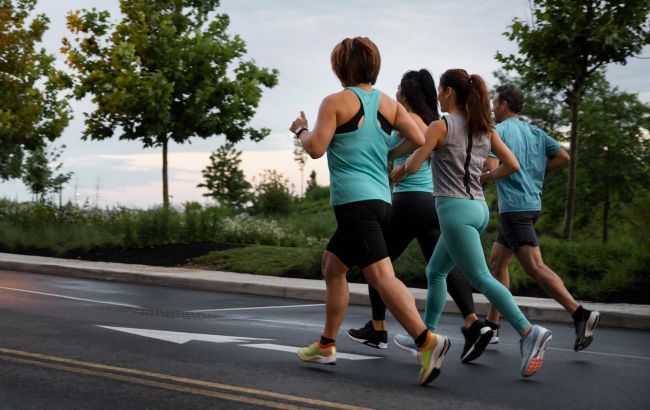No need to rush: Scientists name ideal running pace
 Scientists name the best type of running for health (photo: freepik.com)
Scientists name the best type of running for health (photo: freepik.com)
Running fans are often obsessed with time. For amateurs and professionals, as well as avid runners, the goal is to run faster: constantly training to shave even a few seconds off your marathon time or 5K pace. However, this is not really necessary, writes The Conversation.
Slow running
In recent years, a new trend has begun to gain popularity in running - slow running. The idea of slow running is that anyone can run, regardless of their abilities.
Fans of this approach say that it has many benefits—not only for your health but also for the pleasure of running. Research agrees with this, and evidence suggests that slow running may, in some ways, be more beneficial than higher-intensity exercise.
When we think of elite runners, we might assume that to set world records, they primarily train at a record pace.
Surprisingly, elite runners spend about 80 percent of their training time in what's known as zone 2—a running pace that gets your heart rate up but is slow enough that you can hold a conversation. Only about 20 percent of their training is done in higher-intensity zones that are closer to their race pace.
The reason for this is related to the level of stress that training puts on the body. The faster the running speed, the greater the load on the body. The more stress the body is exposed to, the higher the risk of diseases, infections, and injuries.
By reducing the amount of time they spend at higher intensities, athletes limit their chances of missing training due to illness or injury.
Why is it more useful?
But this approach is about more than just reducing the risk of injury and illness. A fundamental aspect of training is the development of the so-called "base." This term describes the physiological foundations underlying all training adaptations. For endurance runners, this refers to their basic cardio-respiratory training, upon which adaptation to higher intensities can be built.
Your base develops during slow (zone 2) running when physiological stress is relatively low. Even though the heart isn't under a lot of stress when running in zone 2, the amount of oxygenated blood leaving the heart with each beat will be at or near the maximum amount.
This is important because, although the pumping capacity of the heart adapts to exercise, higher intensities do not increase this adaptation. Developing a strong core allows more oxygen to be delivered to working muscles per heartbeat, which is critical to running success.
Not only that, but running at a slow pace forces the body to use stored fat for energy, rather than relying on the carbohydrate stores that come from the food we eat.
Burning fat is a much more metabolically efficient process because the amount of energy obtained from a single fat molecule far exceeds the amount of energy obtained from a carbohydrate molecule. This means runners will generally use less energy, be less tired, and be better able to run fast on race day.
Studies have shown that increases in VO2 (oxygen capacity) max and race speed are about 1 percent higher in athletes who spend more time in slow running. It is important to note that the increase in aerobic base is about five times higher in slow runners compared to athletes who run more often with high intensity.
Even if you're not an athlete, aiming to keep most of your runs at a low intensity may still be optimal.
How to determine the tempo
If you want to try slow running, the most important thing is your pace. How exactly do you know you're at the right speed to be classified as a slow runner?
Some scientists divide running pace into five or six different zones. Physiologically, zone 2 is defined as the zone below the lactate threshold - the point where lactate (the acid the body produces when it starts burning carbohydrates for energy) first begins to appear in the blood.
Simply put, it should be a pace at which you can still maintain a conversation while your heart rate is only about 70 percent of your maximum. If you find that the conversation is becoming difficult, you should slow down.
If you are running on your own, you can have a taste of the speaking test. If you can sing to yourself out loud without trying to rest, you're in the right zone. If you struggle, you are using too high an intensity, and your muscles will begin to accumulate lactate (which can cause your legs to feel heavy).
Slow running has many benefits for both your body and your mental health. So if you've always been ashamed of your slow running pace, maybe this will inspire you to put on your running shoes and run.
Earlier we wrote about 5 principles of running training that will definitely give results.
This material is for informational purposes only and should not be used for medical diagnosis or self-treatment. Our goal is to provide readers with accurate information about symptoms, causes, and methods of detecting diseases. RBС-Ukraine is not responsible for any diagnoses that readers may make based on materials from the resource. We do not recommend self-treatment and advise consulting a doctor in case of any health concerns.

